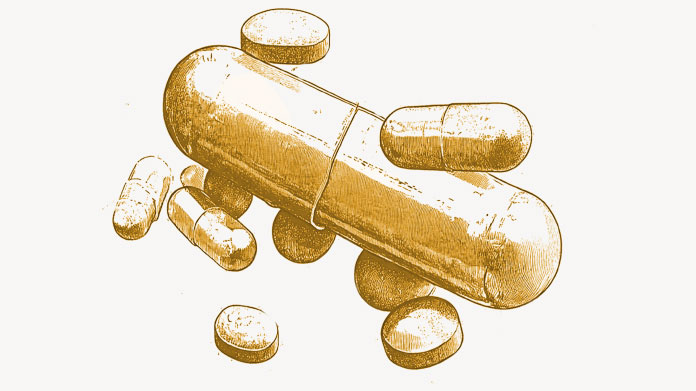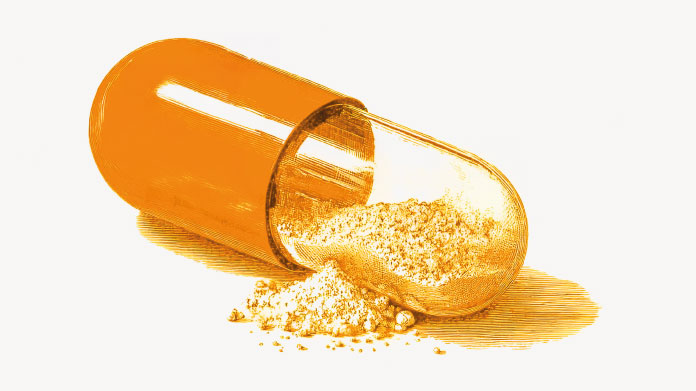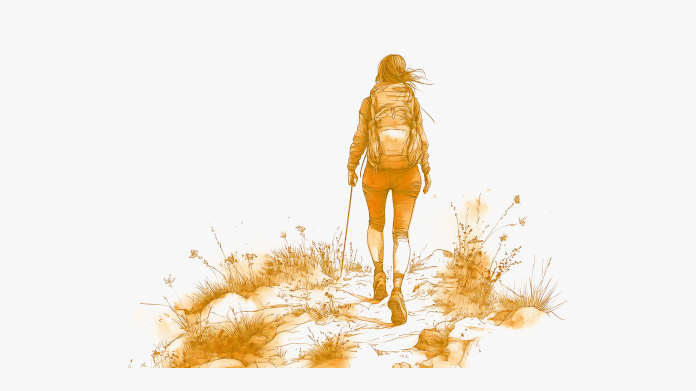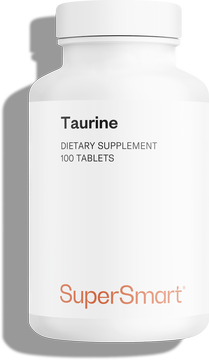Rhodiola: benefits and dosage of the famous ‘golden root’
An adaptogen plant used for centuries by those living in cold climates, rhodiola offers many advantages for health. Discover now the benefits of this arctic root, a plant of significant scientific interest.
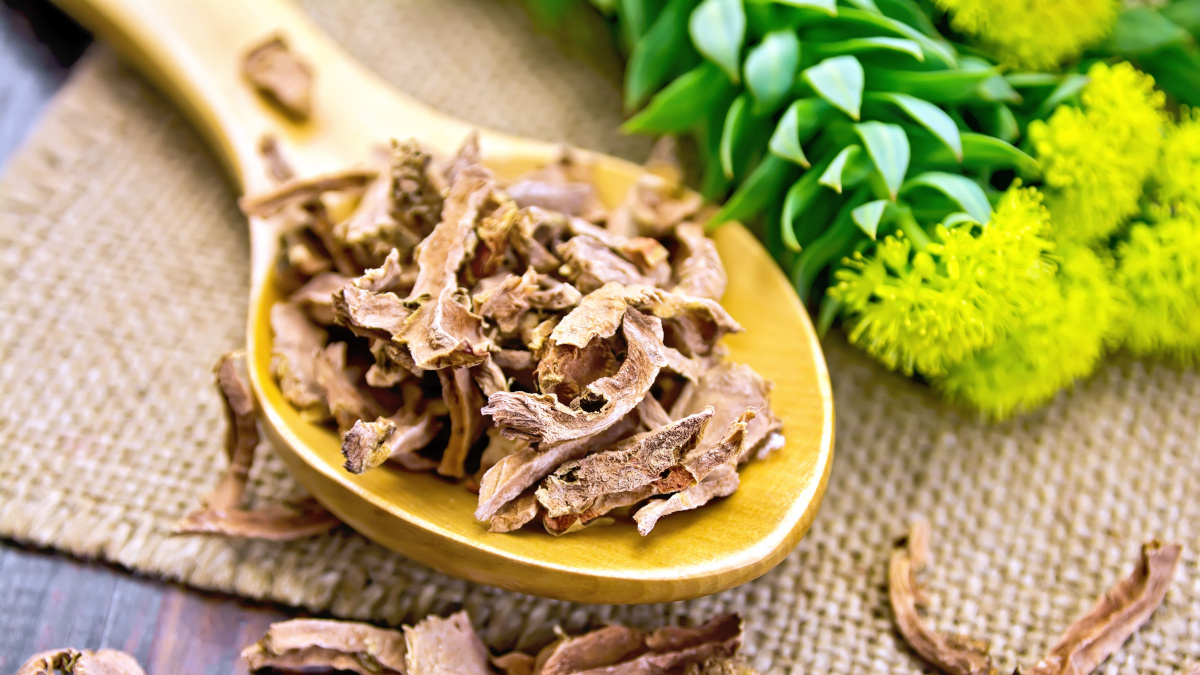
What exactly is Rhodiola rosea?
Rhodiola rosea, also known as simply rhodiola, roseroot, golden root and arctic root, is a perennial plant indigenous to the world’s colder regions. It thus grows in the Arctic, in mountainous areas of central Asia and in Northern Europe.
It has traditionally been used by the Vikings, Inuits, and Sami (or Laplanders)... as well as by practitioners of Chinese medicine.
Composition of the ‘arctic root’ or ‘golden root’
Rhodiola contains various active ingredients, including in particular:
- rhodiolosides, glycoside compounds;
- tyrosol, a phenolic substance;
- and the famous rosavins, responsible for many of the plant’s properties (1).
It also contains flavonoids, essential amino acids and a number of minerals and vitamins.
The only part of the rhodiola plant which is consumed and used in phytotherapy is the root (hence its alternative names of ‘golden root’ and ‘arctic root’). A number of scientists have now succeeded in identifying its beneficial properties.
Multiple benefits of the adaptogen Rhodiola rosea
Rhodiola:
- supports strength and physical condition (2);
- helps the body adapt to emotional stress and is thus classified as an adaptogen». It has shown positive effects against fatigue and stress-induced headaches (3-4);
- has a beneficial effect on the cardiovascular system, as it helps protect against stress and hypertension (5);
- helps maintain normal circulation which is associated with healthy brain function and reactivity. It thus supports optimal mental and cognitive activity and helps stimulate perception (6);
- has been shown to help those with sleep problems. Taking a rhodiola supplement may thus be beneficial for those who have trouble falling asleep ... (7);
- rhodiola is also a plant antioxidant which helps protect cells(8).
Dosage: how much rhodiola should you take a day?
This arctic root can be taken in the form of a herbal tea or decoction, in which case consume 300-550 mg a day, spread over 3 cups a day, for a period of one week, followed by a week’s break.
However, the simplest way to consume rhodiola is to take pre-dosed capsules, which avoids the risk of taking too much. Choose a supplement such as Rhodiola rosea, which provides 600 mg of Rhodiola rosea a day, standardized to 5% rosavin. For maximum benefit, take one capsule before breakfast, and one before lunch.
Other supplements that contain Rhodiola rosea
If you’d like to benefit from several adaptogen plants at the same time, opt for a synergistic formulation (such as Adaptix, which contains Rhodiola rosea, astragalus, schisandra...)
If you’re feeling stressed, you could also try the formulation Adrenal Support. Along with rhodiola, it contains tulsi which helps protect against the effects of stress, and eleutherococcus, another excellent adaptogen.
Do you spend hourstossing and turning in bed? Do you wake up constantly during the night and get up each morning feeling increasingly tired? As well as containing Rhodiola rosea, the supplement Natural Sleep Formula has a high hop and valerian content, which helps promote good quality sleep.
Caution: rhodiola is not recommended for women who are pregnant or breastfeeding, or for those suffering from kidney disease or cirrhosis.
References
- Li Y, Pham V, Bui M, et al. Rhodiola rosea L.: an herb with anti-stress, anti-aging, and immunostimulating properties for cancer chemoprevention. Curr Pharmacol Rep. 2017;3(6):384-395. doi:10.1007/s40495-017-0106-1,
- Parisi A, Tranchita E, Duranti G, Ciminelli E, Quaranta F, Ceci R, Cerulli C, Borrione P, Sabatini S. Effects of chronic Rhodiola Rosea supplementation on sport performance and antioxidant capacity in trained male: preliminary results. J Sports Med Phys Fitness. 2010 Mar;50(1):57-63. PMID: 20308973.
- Ishaque S, Shamseer L, Bukutu C, Vohra S. Rhodiola rosea for physical and mental fatigue: a systematic review. BMC Complement Altern Med. 2012;12:70. Published 2012 May 29. doi:10.1186/1472-6882-12-70
- Li Y, Pham V, Bui M, et al. Rhodiola rosea L.: an herb with anti-stress, anti-aging, and immunostimulating properties for cancer chemoprevention. Curr Pharmacol Rep. 2017;3(6):384-395. doi:10.1007/s40495-017-0106-1
- Maslova LV, Kondrat'ev BIu, Maslov LN, Lishmanov IuB. O kardioprotektornoĭ i antiadrenergicheskoĭ aktivnosti ékstrakta rodioly rozovoĭ pri stresse [The cardioprotective and antiadrenergic activity of an extract of Rhodiola rosea in stress]. Eksp Klin Farmakol. 1994 Nov-Dec;57(6):61-3. Russian. PMID: 7756969.
- Ma GP, Zheng Q, Xu MB, et al. Rhodiola rosea L. Improves Learning and Memory Function: Preclinical Evidence and Possible Mechanisms. Front Pharmacol. 2018;9:1415. Published 2018 Dec 4. doi:10.3389/fphar.2018.01415
- EFSA Register of Questions – 2659
- Battistelli M, De Sanctis R, De Bellis R, Cucchiarini L, Dachà M, Gobbi P. Rhodiola rosea as antioxidant in red blood cells: ultrastructural and hemolytic behaviour. Eur J Histochem. 2005 Jul-Sep;49(3):243-54. PMID: 16216810.
Keywords
3 Days
Great customer service - responsive …
I ordered from them and my item was unavailable for sometime. I was super happy when they reactivated my order and shipped my item which arrived very quickly. Great customer service.
Ruth Rueter
4 Days
Super fast shipping
Super fast shipping
Donald Borling
7 Days
Reputable companysearch and the number of…
The research and the number of selection of products.
NAKHJAVAN Shervin
20 Days
The Anti Aromatase is a great product
The Anti Aromatase is a great product. You just need to have constant inventory. Recently this product has been out of stock.
GEORGE Verne
22 Days
Great help on chat
Great help on chat. Knowledgeable and friendly.
Jason Argos
25 Days
Customer service was fast and friendly.
Customer service helped to stop the transaction process of the subscription. I appreciated that.
Greenie
26 Days
I order here due to the high quality of…
I order here due to the high quality of the products and the quick delivery of items - thank you
Barbara J
27 Days
SuperSmart's Eye Pressure supplements: highly recommended!
I purchase SuperSmart's Eye Pressure supplements regularly for over 5 years, and gotta say they are truly a wonderful product for my Glaucoma. Highly recommended if you have eye pain from your Glaucoma.
D. Martinez
32 Days
Quick service
Quick service
MONELL
32 Days
Speedy service.
Speedy service.
ROSENTHAL Marvin
36 Days
Clear website- Efficient
Clear website. Excellent search engine and fast delivery!
Mohamad Hussein
39 Days
They have great products.
They have great products.
Vickie
39 Days
Great Shipping Time!
You Have A Great Shipping Time! Praise The Lord!
DMHoge
41 Days
Doctor Recommended!
Good pricing, very good availability, doctor recommended (couldn't find what I needed anywhere else), and it took only a week to arrive (which I can't complain about).
Al
41 Days
Great product and fast shipping
Great product and fast shipping
Marie

